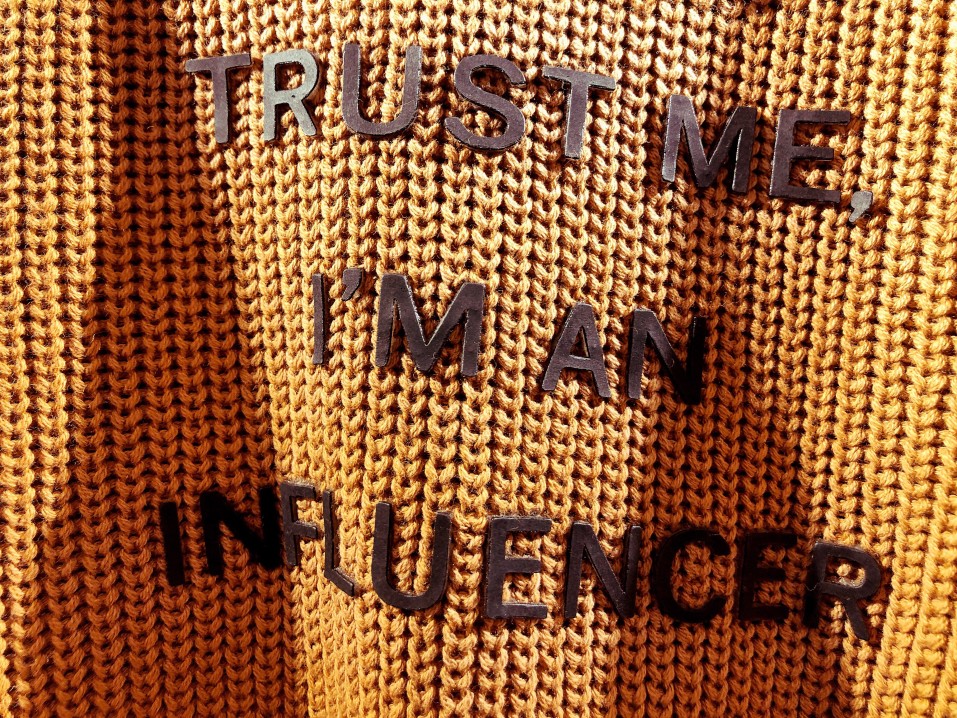In one corner, you have brands enjoying success through “influencer marketing”, where their campaigns are delivered through a multitude of channels to simultaneously reach a group of micro-audiences.
In the other corner, you have a tried and true incumbent business asset. Something that has been really valuable for many businesses’, something you don’t want to lose, and something that you know is central to your customer experience strategy moving forward, called “brand trust”.
To be fair, influencer marketing (IM) is quickly proving itself as a cross functional, customer centric tool in every marketers toolkit, and it’s now starting to take real shape. Becoming highly effective at engaging a brand’s target audience through a myriad of social media channels, and now getting global recognition as a stand alone marketing discipline.
But doesn’t it seem the more a brand accelerates and becomes proficient at one of these things, the more they tend to lose out on the other?
Is it just me, or are all the brands that seem to be excelling in these new environments the newcomers, the challengers, (think Spell and the Gipsy Collective who will do +50M in 2019), while the incumbent brands and their traditional channels (like Myer) continue to struggle, not just in their traditional business (ie: Bricks and Mortar retail), but also in their digital business.
Why does it seem to be one or the other when it comes to brand trust?
Why can’t you build brand trust, improve the customer relationship, and focus on your digital user experience at the same time?
Rachel Botsman is one of the world’s leading authorities on brand trust in the digital age, and her work reveals that there is no reason why incumbent organisations need to accept this dissolution of trust. Instead they just need to understand why this phenomenon is taking place and redefine the rules of trust with the consumers of today.
Customer loyalty is always closely linked to brand trust, and the fastest way to disenfranchise a loyal customer is to give them a poor experience. If the customers expectations of an incumbent brand (whom they already trust) are high, then just because they’re suddenly interacting with that brand in a new channel does not lower their expectations of the brand’s service level.
For example: If someone who’s been happily banking with a teller face to face at their local bank branch suddenly decided to jump online to do the same task with the same company, it would be reasonable for them to expect to have the same level of satisfaction after their digital experience as they did with their physical one.
Consumers don’t disseminate between touchpoints for a brand. Either the brand meets their expectations at a particular touch point, or they do not. The consumer with a poor online experience is just as upset as the consumer who had a poor physical experience.
So how do you find a way to actively disperse your communications, and at the same time build brand trust?
There needs to be a way to view both of these objectives within the one frame, so as to avoid it becoming a win / lose situation.
The good news is that there is a frame you can use, that allows you to openly embrace influencer marketing, and to actively build a bridge over the brand trust gap at the same time.
You simply need to view the whole situation through the lens of your customer experience (CX).
In order to bridge the trust gap, and define the opportunity for growth, you need to be able to view Customer Experience (CX) and Influencer Marketing in the same frame.
2015 saw a pivotal moment in the history of mobile, as in that year, it was the first medium to eclipse television at the most dominant screen. Simon Khalaf (CEO of Flurry the worlds #1 App Analytics platform) presented at Yahoo’s Mobile Developer Conference in San Francisco some interesting statistics that showed we now spend more time on our mobile phones each week than we do watching TV. And that’s an average across all age groups. For Millenials, it’s much higher.
As a marketer, you would have to consider that the mobile screen is at least equally likely to influence behaviour as much the screen in the lounge room can. But in reality, the mobile screen is even more influential than television, because through this screen, we can engage and connect with others, others who we think are like us, others who influence us.
Even though a lot of marketing budgets have dipped their toe into customer experience (CX) design and technologies, many CX and customer journey maps fail to really address the tectonic shifts in consumer trust that have ultimately provided such fertile ground for massive disruption to become possible in the first place.
For those companies & their CEOs who are obsessed with their CX (think Bezos and Amazon), influencers aren’t just “a” touchpoint on the path-to-purchase, they are “the” path to purchase.
If you keep at least some focus on influencers when you map out your customer journey, you can really unlock the power of persuasion across your entire customer experience. By integrating your influencer marketing strategy into your broader digital and content marketing plan, it can all start to work together cohesively, meaning the outcome is something that is greater than simply the sum of its parts.
Too often IM is a stand alone or fragmented initiative – conceived, budgeted for, and delivered outside of the main strategy.
But when you consider the success of these digital native brands (like the rise of Amazon), you can see how they have found ways to make influencers an integral part of their digital strategy.
Other digitally native vertical brands (DNVB) that have led disruption in their industries, such as AirBnB, Uber, Glossier, Dollar Shave Club, Warby Parker, all have something in common, they used technology and design to embed trust with their users at every possible touchpoint.
These brands have met a fundamentally changed consumer, in a different pathway to retail, and in turn, have set the pace on what consumers expect from brand experiences as a result.
The new dynamics of consumer trust as described by Rachel Botsman, show that the erosion of consumer trust in institutions in particular, has not only enabled these disruptive new business models to thrive, but instead, it’s this underlying force that now mandates how brands must navigate and evolve their marketing & communications strategies to survive today.
I like this quote from The Post-Digital CMO, (Forrester Research, 2017). “Relationship-based newcomers will disrupt product companies. Those brands that can create relationships with individuals will reap the rewards”
Don’t forget, Unilever forked out over a billion dollars for the ‘Dollar Shave Club’. Not because its razors were all that superior, but instead they just wanted access to its customer database.
There’s a lot more to creating a seamless CX across digital and physical touchpoints than what meets the eye. Beneath the surface, it is the same advances in technology that prompted the rise of CX design and journey mapping in the first place, that were also catalysts for a greater, (albeit less tangible), emotional shift. That is the dissolution of institutional, centralised trust between corporations and consumers, and the emergence of distributed, peer-based trust among consumers.
But adding to the complexity of how consumers’ decide what to buy, is that their choices are increasingly influenced by the people they choose to connect, and interact with online.
And it is the digital proliferation that is ultimately reshaping how “we” as a society form trust with each other, and with brands and institutions.
“The Trust Gap” between corporations and consumers is only expanding, but so is the size of the opportunity for marketers to bridge this gap by establishing trust with consumers through consistent UX design, and integration of influencer marketing into the broader spectrum.
People will always be influenced by others who they feel are ‘like them’ and who ‘they aspire to be’.
As a brand, you need to make an effort to be there with open arms in those pivotal moments when consumers actively seek out branded content, such as FAQ’s, or when they’re looking for social proof to help reinforce, justify, and rationalise their purchase decisions.
If you can view your influencer marketing program as an active component of your broader marketing strategy, including mapping it as part of your customer journey, you can make sure that those touch points are relevant to the consumer, and that they work cohesively as part of your overall marketing plan.
This approach will give a lot of strength to your own brands level of trust with each individual consumer & help bridge that gap, whilst at the same time streamlining the path to purchase and helping to drive sales.
Stu Stevens
MD & Founder of Remap Online
(Stu was previously Head of Development for Yahoo! Inc in ANZ, and Director of Digital for Bauer Media AU)




